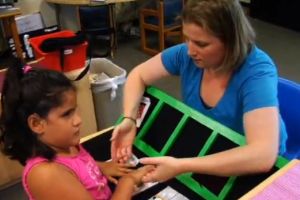Tangible Symbols Webcast
Submitted by Charlotte Cushman on Jan 02, 2013

This webcast from Perkins provides an overview of using tangible symbols to communicate. Children who are blind or visually impaired with additional disabilities or deafblindness often need a way to augment their communication, both receptively and expressively. Objects, partial objects, and other concrete representations are helpful tools for children in the early stages of literacy. Present by Elizabeth Torrey, Speech and Language Pathologist in the Early Learning Center at Perkins School for the Blind, this webcast includes the following:
Chapters:
- The Use of Tangible Symbols to Support the Development of Communication
- What Are Tangible Symbols?
- How Tangible Symbols Should Be Presented
- The Benefits of Using Tangible Symbols
- Considerations When Developing Tangible Symbols
- Behavioral Benefits
